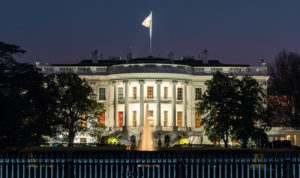
Canadian Bar Association report may rekindle debate over alternative ownership structures for U.S. law firms.
Could non-lawyers own law firms? According to a recent report by the Canadian Bar Association (CBA), the answer should be “yes.” In a potential “watershed moment” for lawyers in Canada, and possibly also in the United States, the CBA issued more than twenty major recommendations for changes to the legal profession, including – most controversially – the adoption of alternative business structures that permit non-lawyers to own and even manage law firms.
The CBA’s report and recommendations are premised on fundamental changes in the overall economy impacting the legal marketplace, including changing client expectations as a result of increased globalization and new technologies, along with “a growing lack of access to legal services.” By facilitating innovation, modernizing regulation, and enhancing access to legal education, the CBA hopes that the Canadian legal profession can thrive despite challenges presented by exogenous market shifts. Although the report’s recommendations are non-binding even in Canada, the industry similarities and breadth of analysis make them relevant to the ongoing debate over the structure of legal services in the United States.
The debate over alternative ownership structures for law firms largely stems from disagreement over the right balance between the benefits of insulating lawyers from a profit-maximizing marketplace, and the costs of limiting the commercial flexibility and diligent oversight provided by investors. The American Bar Association (ABA), representing lawyers in the U.S., considers the potential benefits of insulation to be paramount. Unlike virtually all other U.S. industries, the current legal structure effectively bars non-lawyers from owning or managing law firms, “to protect the lawyer’s professional independence of judgment.” In fact, the ABA Commission on Ethics 20/20, which reviews the conduct rules and regulation of the legal industry, recently rejected a proposal similar to that advocated by the CBA, despite legal challenges and the ABA’s own acknowledgement that there has been “no evidence of adverse consequences” resulting from the District of Columbia allowing “a limited form of nonlawyer ownership.”
Other jurisdictions have already embraced the approach advocated by the Canadian Bar Association. In 2011, for example, the United Kingdom permitted “non-lawyers for the first time” to invest in law firms. Still farther back, Australia went a step further, becoming the first jurisdiction to allow publicly traded law firms, starting with the successful public offering of Slater & Gordon in 2007.
Although most of Canada currently has similar limitations on law firm business structures as the United States, the CBA finds the restrictions to be unduly onerous. Its report concludes that relaxing existing demarcations could allow lawyers “to deliver some legal services profitably at a lower cost,” while more flexible business structures may “encourage more innovation and business process improvement.” Furthermore, research described in the CBA’s report, has shown that in England and Australia, “market liberalization and outside investment . . . are improving the availability of legal services and lowering costs,” demonstrating that “non-lawyer ownership need not cause harm to client representation or the public interest,” despite ongoing concerns over accessibility in Australia.
Notably, for reasons paralleling the ABA’s apprehensions, the CBA report recommends that alternative business structures be “carefully regulated,” through a two-tiered framework similar to that used by England and Australia. First, as is currently the case, attorneys are directly regulated by the profession, and second, the law firm’s legal entity – now potentially owned by non-lawyers – would be regulated by law societies, with which firms would be required to register.
Practitioners are divided on the potential benefits of alternative ownership structures for U.S. firms, with some concerned that “chasing monetary gain” will corrupt the profession and others seeing alternative structures as “simply codify[ing] arrangements that are already common.” Notably, the latter proposition is bolstered by the fact that many attorneys already work for and alongside non-lawyers – practicing law in-house and at government agencies – while seemingly retaining their professional judgment. Further, while American doctors adhere to similarly stringent ethical standards as attorneys, no comparable restrictions exist on non-physician ownership of hospitals – including publicly traded hospital systems.
At the same time, just because outside investment may become an option does not mean that the industry will rush to embrace it. For example, large U.K. firms have yet to take advantage of alternative ownership structures, and few major Australian firms have followed Slater & Gordon’s lead to go public. Similarly, despite being largely unrestrained in their ownership structure, many prominent U.S. management consultancies – a business model relatively similar to law firms – have chosen to remain private partnerships because of institutional dynamics that facilitate lower transaction and governance costs through the structure.
If the CBA’s recommendations are adopted, the potential transition to alternative ownership structures for Canadian law firms may rekindle the debate with respect to U.S. firms. In particular, the aggregate welfare effect of the U.K.’s – and possibly Canada’s – transition provides a robust counterfactual to the U.S. legal market that is certain to be closely monitored by commentators advocating for change, divided practitioners, and the ABA.



